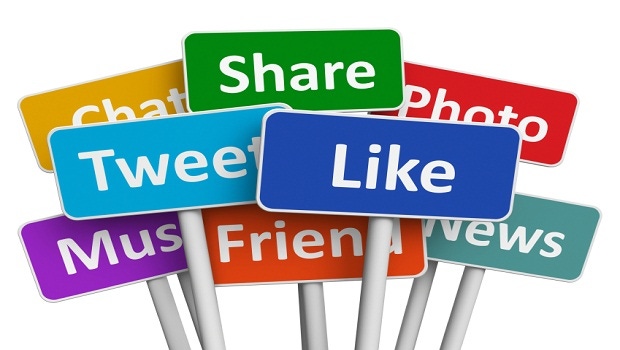Social media can bring a large ROI, but a supplement brand's strategy needs to choose the correct platform, objectives and audience to gather sales leads.

Social media has become a mainstream marketing channel. The return on investment (ROI) executive management requires for a social media program rests on its ability to impact measurable business results. This expectation mandates careful planning that connects the dots between a business/sales objective and the role social media will play in achieving that goal.
It may seem obvious, but when developing such a plan, it’s critical to identify the social media platforms on which a target audience—prospects, customers and industry influencers—participates and where a brand can expect to engage them. Don’t assume every platform makes sense. Do the research to be sure that the social media you choose—be it LinkedIn, Facebook, Twitter, Google+, Pinterest or others—are actually ones where your target audience is active and ones that a company has the resources to fully support with rich content assets.
Also, because content is king on social media, make sure the content is relevant, interesting and worthy of engagement. Create a mix of company-focused and third-party content so the platform does not have a “me-me-me" persona. Any company-focused content should always include trackable links back to your website, so analytics can confirm a connection between social media and business objectives.
Connecting Social to Sales
To directly connect social media to a sales result, content must incent action. A sales-related action that takes place through, or is facilitated by, the social media platform is trackable and establishes ROI.
As a business-focused platform, LinkedIn is likely to be a foundational part of any business-to-business social media strategy. With more than 277 million individual users, 3 million company pages and 2 million groups, it has amazing penetration into business categories of all sizes, including niche audience and market segments. The ability to target LinkedIn advertising to highly specific audiences is another plus. Trackable links in ads or in posts can take a prospect back to a downloadable white paper or other-lead gathering mechanism. Individual connections and LinkedIn groups provide avenues for direct engagement with prospects and another way to track a sales result to a social media engagement.
Tools such as Offerpop allow you to run offers and social promotions—cross channel and cross multiple social media platforms—that are trackable and linkable with your website for maximum reach. Consider it for initiatives on Facebook, Twitter, Pinterest, Vine or Instagram. There are other contest apps, advertising targeting and additional resources for running a successful online promotion. Contests and promotions can target business-to-business audiences as well as consumers, and can include collecting information to identify and track a legitimate sales lead.
Track Social Costs to Measure ROI
Tracking social media costs is the only way to accurately assess the ROI for social media initiatives. Include costs for:
Staff devoted to content development and the day-to-day community management of the platforms that are part of your program (part-time, full-time, freelance and agency)
Creating or buying content assets such as videos, infographics or presentations
Social media management and tracking tools, such as Radian6, Marketing Cloud, Meltwater, Spreadfast or Shoutlet
Social media contest and promotion apps, prizes and fulfillment
Social media advertising connected to any promotion or marketing initiative
Turning Likes into Leads
Social media excels at guiding prospects down the sales funnel. There are tried and true tactics to grow likes and follows (folks at the top of the funnel), turn those likes and follows into trackable leads (folks toward the middle of the funnel) and ultimately into sales (conversion).
One tactic is a Facebook contest that requires a "like" to enter, and is supported with highly targeted Facebook advertising and cross-platform promotion. The new likes grow your universe of possible prospects, those people at the top of the funnel. The contest entry form collects information that qualifies the lead (middle of the funnel). The qualified lead can then be nurtured through a conversion cycle with continuing touchpoints and follow-up.
A recent contest developed by my agency, CBD Marketing, for a manufacturing company provided a good example. The contest developed a lead database for the company that could be leveraged into sales. A 30-day contest offered five “grand prizes" of company product valued at USD $300 each awarded at the end of the contest. Fifty sub-prizes valued at $20 each were awarded throughout the 30-day promotion to keep people engaged. In addition to inviting current customers, partners, vendors and other parties to share the contest content and links, new likes were garnered with targeted Facebook advertising directed only to the individuals and groups fitting the customer profile demographics. The contest was promoted cross-platform—on the company’s Twitter and LinkedIn pages.
The entry form narrowed the funnel even more, collecting very specific information from the entrants on how they would use the product, which identified them as a qualified lead. Entrants also left their name and email address. At the end of the 30 days, 1,000 individuals left information as part of the contest entry process that identified them as qualified leads. The company then converted this information into their first prospect database, and a series of follow-on touchpoints were developed to continue to nurture these leads and move them through the sales process to conversion.
The contest ROI was based on total cost of that 30-day initiative divided by the number of qualified leads gained. With the cost of each qualified lead in this contest only one-fifth of the company’s typical spend per qualified lead through other channels, the dots from social to sales were connected and ROI was very positive indeed.
Jean Ban is vice president, public relations and social media at CBD Marketing (cbdmarketing.com) in Chicago, a communications firm that works with national and global food and food ingredient companies.
About the Author(s)
You May Also Like




.png?width=800&auto=webp&quality=80&disable=upscale)